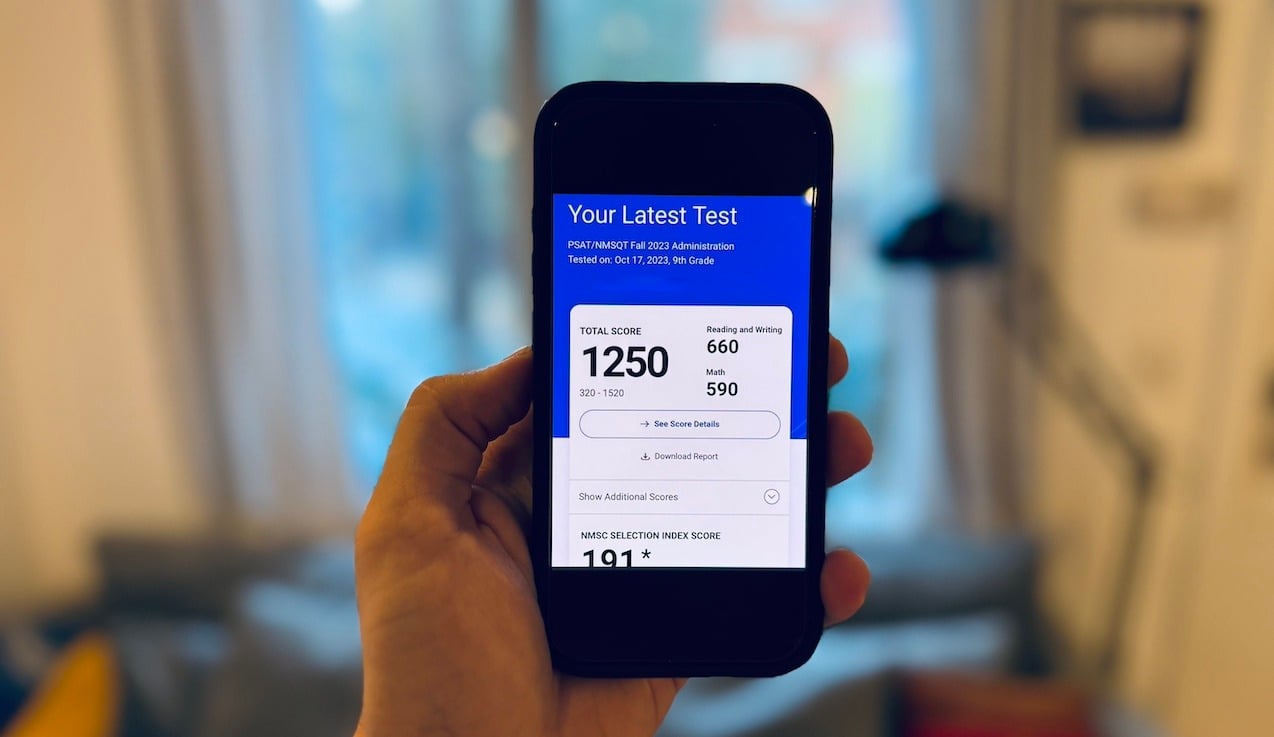It’s that time of year again! For parents of high school juniors, November is when PSAT scores roll in, offering you a first glimpse into your child’s strengths and weaknesses in college admissions testing.
And for those who know how to interpret them, PSAT results provide valuable insights into your child’s testing potential: whether testing makes sense for them and what outcomes you can reasonably expect.
Here are the three key takeaways from your child’s report.
1. PSAT Results Should Set SAT Expectations
The score your child receives on the PSAT/NMSQT (Preliminary SAT) is meant to provide a projection of how your child would perform on the SAT if they took it in the next couple of months. As such, it provides a reasonable score baseline for those starting their preparation this fall or winter.
Beyond the next couple of months, as your child progresses academically through the school year, we tend to see some slight score improvements. And we have a sense of what those improvements look like, thanks to "growth estimate" data from College Board, the company that develops the SAT and PSAT. According to that growth estimate data, a student scoring an 1100 on their PSAT (550 in each section) would be expected to reach an 1160, on average, by fall of their senior year—an approximately 60-point improvement.
Lower starting points can produce larger gains. The growth estimate for students starting at an 800 (400 in each section) is about a 910. But the inverse of this is true as well. Higher starting points, on average, see smaller gains: Those who start with a 1400 (700 in each section) tend to only increase to about a 1430.
Whatever the increase, that’s positive news! But it is notable how modest these improvements are. And the increase is not guaranteed; a sizable minority of the students in the data set did not improve or even saw score decreases by the time they tested.RELATED READING: 4 Insider Secrets to Help You Prep for the New SAT
2. Intentional Test Prep Can Boost SAT Outcomes
For families aiming for more substantial and assured score increases, more intentional test prep is needed. To be clear, we are not suggesting that a lower-than-ideal PSAT score should send you running to the nearest 100+ hour bootcamp! But as with most anything else, your child can improve on their PSAT score through smart, dedicated practice.
To start with the simplest (and free) option, students who committed to 20 hours of Khan Academy, an "official" source for online SAT practice, score about 50 points higher on average than those who don’t prep. On the other end of the spectrum, 20 hours of personalized one-on-one tutoring is more likely to produce gains in the ballpark of 160-240 points. Of course, results depend on factors like the student’s starting point and their dedication to the process.
What option is best for your child will depend on factors like schedule, learning style, and budget. First and foremost, consider how close your child’s current score is to their target and which type of prep aligns best with those goals.
3. Remember, the PSAT Is Just One Option
If you’re reading all of this while looking at your child’s report and getting nervous that your child’s score is not where you’d hoped, don’t worry! Here are the next things to consider:- Talk to your child. Did they take this test seriously? If not, a second practice PSAT or practice SAT might give a more accurate baseline score.
- Consider the ACT. It’s a bit longer and faster paced than the SAT, but for some students the ACT can come with real advantages—often enough so that it can change decisions around testing entirely.
- Take a practice SAT with more detailed reporting. The PSAT report’s limited “Knowledge and Skills” data can make it hard to pinpoint the true cause of performance challenges. A practice SAT will give you detailed performance information and help you identify whether performance challenges were caused by fundamental issues, specific knowledge gaps, or simple, correctable mistakes.
READ MORE: 10 Important Standardized Testing Terms You Need to Know
Regardless of your child’s PSAT score, remember it’s just one single moment in their testing journey. Between now and your child’s first official SAT, a lot can change. Now is an ideal time to think about college goals and what sort of score would add value to your child’s application. With careful test selection and a proactive prep plan, your student can make significant progress—well before the end of the school year!











